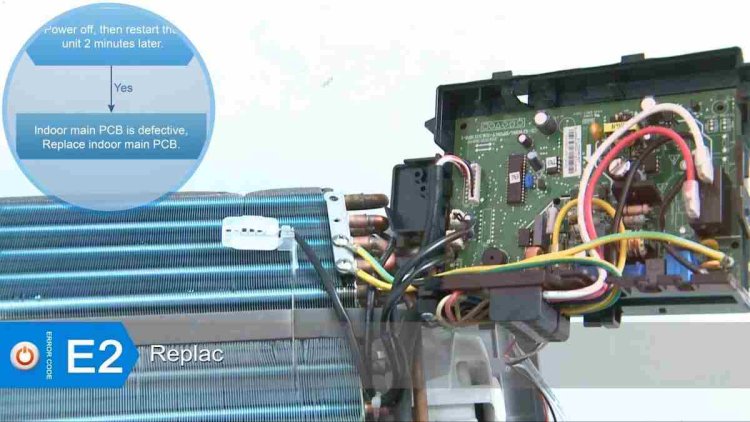Troubleshooting Mini Split Errors – A Guide to Common Codes and Solutions
Mini split air conditioning systems offer efficient and flexible cooling and heating solutions for homes and buildings. However, like any HVAC equipment, mini splits can occasionally experience errors
Mini split air conditioning systems offer efficient and flexible cooling and heating solutions for homes and buildings. However, like any HVAC equipment, mini splits can occasionally experience errors that disrupt their operation. Understanding the common error codes and troubleshooting methods can help homeowners and building professionals quickly resolve issues and maintain optimal performance.
Understanding Mini Split Error Codes
Most mini split systems come with built-in diagnostic features that display error codes when a problem occurs. These error codes vary depending on the manufacturer, but they generally indicate issues related to electrical faults, refrigerant levels, sensor malfunctions, or communication errors between components.
Common Mini Split Error Codes and Solutions
1. E1: High-Pressure Protection
Cause:
- Blocked air filters or condenser coils
- Insufficient airflow due to obstructions
- Overcharged refrigerant levels
- Malfunctioning pressure sensor
Solution:
- Clean or replace air filters
- Remove debris from condenser coils
- Check refrigerant levels and adjust if necessary
- Inspect and replace the pressure sensor if faulty
2. E2: Indoor Coil Freeze Protection
Cause:
- Low refrigerant charge
- Dirty evaporator coil
- Clogged or restricted airflow
- Malfunctioning temperature sensor
Solution:
- Inspect and recharge refrigerant if needed
- Clean the evaporator coil
- Ensure proper airflow by checking vents and filters
- Test and replace the temperature sensor if required
3. E3: Low-Pressure Protection
Cause:
- Refrigerant leakage
- Blocked or restricted airflow
- Faulty pressure sensor
- Compressor issues
Solution:
- Identify and fix refrigerant leaks before recharging
- Ensure air filters and vents are clean and unobstructed
- Replace defective pressure sensors
- Check compressor function and wiring
4. E4: Compressor Overload Protection
Cause:
- Overheated compressor
- Dirty condenser coils
- Voltage fluctuations
- Faulty capacitor or compressor relay
Solution:
- Allow the compressor to cool before restarting
- Clean condenser coils for better heat dissipation
- Check electrical supply stability
- Replace faulty capacitors or relays
5. E5: Communication Error Between Indoor and Outdoor Units
Cause:
- Loose or damaged wiring connections
- PCB (Printed Circuit Board) failure
- Power supply fluctuations
- Improper installation
Solution:
- Check and secure all wiring connections
- Test and replace the PCB if needed
- Use a stable power supply or surge protector
- Ensure correct installation and setup
6. F1/F2: Indoor or Outdoor Temperature Sensor Malfunction
Cause:
- Defective temperature sensor
- Loose wiring connections
- Environmental factors affecting sensor readings
Solution:
- Replace faulty sensors
- Secure sensor wiring connections
- Reposition sensors away from direct sunlight or heat sources
7. P4: Compressor Drive Malfunction
Cause:
- Faulty inverter board
- Overheating compressor
- Power supply issues
Solution:
- Examine and substitute the inverter board if necessary.
- Allow the compressor to cool before restarting
- Check for stable power input
Preventative Maintenance Tips
Regular maintenance is key to preventing mini split errors. Here are some essential practices:
Clean Air Filters Regularly: Dirty filters restrict airflow and cause system inefficiencies.
Inspect Refrigerant Levels: Low refrigerant can lead to freezing or pressure-related errors.
Check Electrical Connections: Loose wires can cause communication errors and malfunctions.
Keep Coils Clean: Condenser and evaporator coils should be free from dust and debris.
Monitor System Performance: Any unusual noises, temperature inconsistencies, or error codes should be addressed promptly.
When to Call a Professional
While some troubleshooting steps can be performed by homeowners or building maintenance personnel, certain issues require professional HVAC service. If the problem involves refrigerant leaks, compressor failures, or electrical faults beyond simple wiring checks, contacting a certified technician is recommended.
Conclusion
Troubleshooting mini split errors effectively requires understanding common error codes, their causes, and the appropriate solutions. Regular maintenance and timely interventions can prevent major system failures, ensuring your mini split runs efficiently year-round. For persistent or complex issues, professional HVAC service is the best course of action.
By keeping this troubleshooting guide handy service ac jakarta, home and building professionals can ensure minimal downtime and maximize the longevity of their mini split systems.
What's Your Reaction?

















